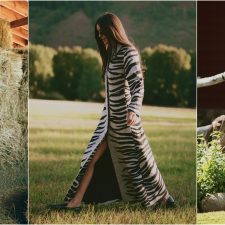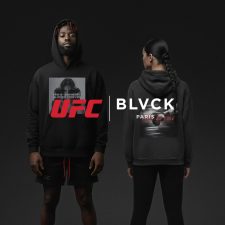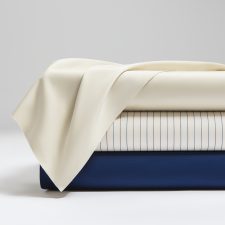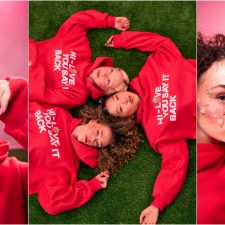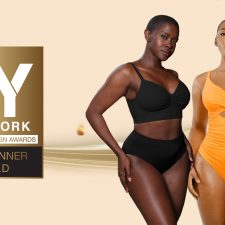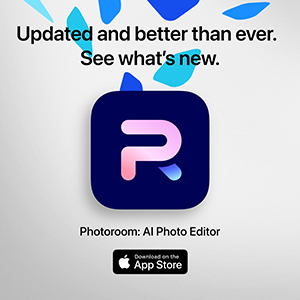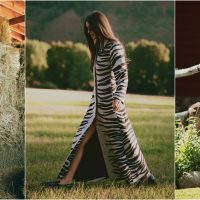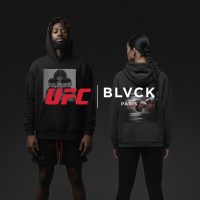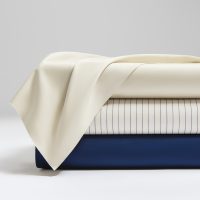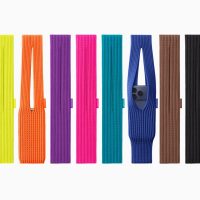By Senay GOKCEN | Editor-in-Chief
In this edition of Fashion Trendsetter’s Industry Q&A-a series spotlighting visionaries in fashion, interior design, and textiles-, today we welcome a duo; Kimberly Lau and Linda Young, Co-Founders of Project ReWear.
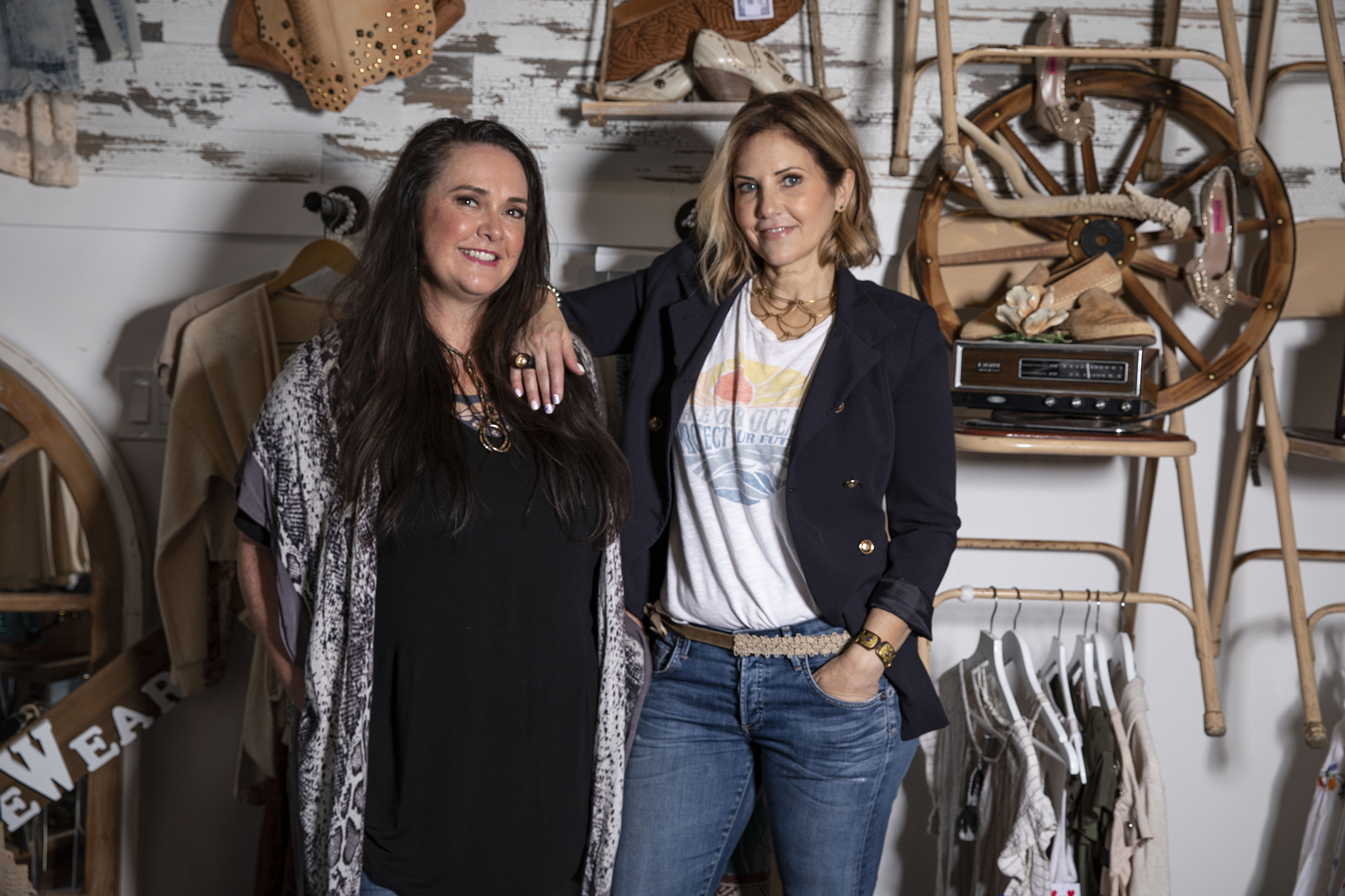
Kimberly and Linda inside Project ReWear’s Thousand Oaks boutique – a stylish, sustainability-driven space where secondhand becomes first choice.
Photography by Emily Perez, courtesy of Project ReWear.
We’re pleased to welcome Kimberly Lau and Linda Young, Co-Founders of Project ReWear. Together, Kim and Project ReWear are driving meaningful change-one carefully curated, preloved outfit at a time. By reducing textile waste, offering cost-effective solutions for families, and promoting sustainable fashion practices, they are helping shape a more responsible future for the next generation. We’re honored to feature them at Fashion Trendsetter and highlight the impact of their important work.
Founded by Kimberly Lau, Project ReWear is a Thousand Oaks, California-based boutique specializing in high-quality, preloved children’s clothing. The brand is committed to making sustainable fashion accessible, affordable, and stylish for families of all backgrounds.
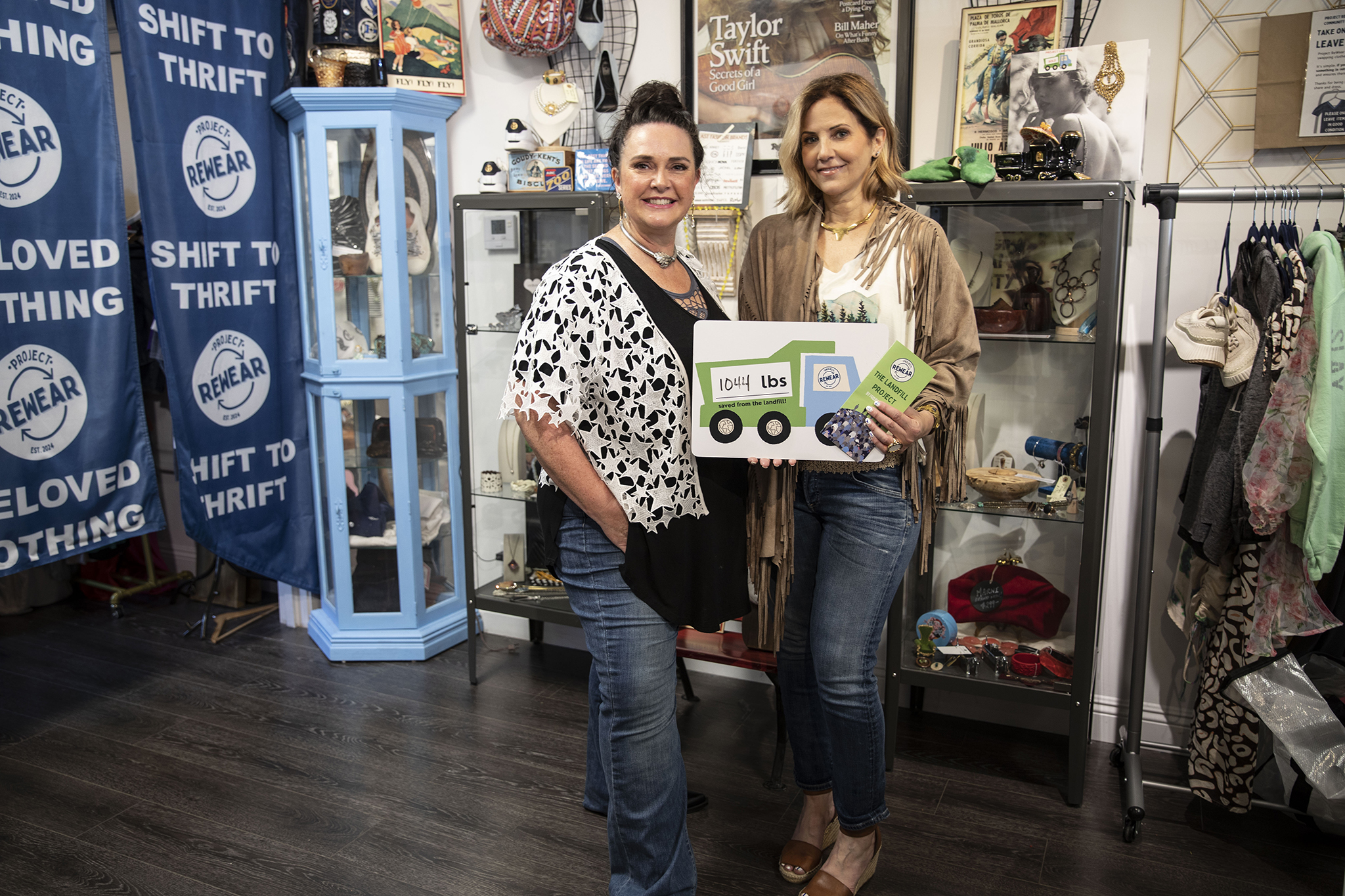
Co-founders Kimberly Lau and Linda Young pose proudly with their “Landfill Project” display, celebrating over 1,000 pounds of clothing diverted from landfills since launch.
Photography by Emily Perez, courtesy of Project ReWear.
Project ReWear sources and purchases gently used children’s apparel from thrift stores, selecting each item with a focus on quality, design, and sustainability. The result is a thoughtfully curated collection that allows parents to shop responsibly without compromising on style or budget.
More than a retail venture, Project ReWear represents a forward-thinking approach to conscious consumerism-empowering families to make smarter fashion choices while contributing to a more sustainable planet. Project ReWear’s “The Landfill Project” is their core in-store program that tracks every pound diverted from landfills offering a tangible, visual way for shoppers to see their impact with a simple, joyful, and community-fueled approach.
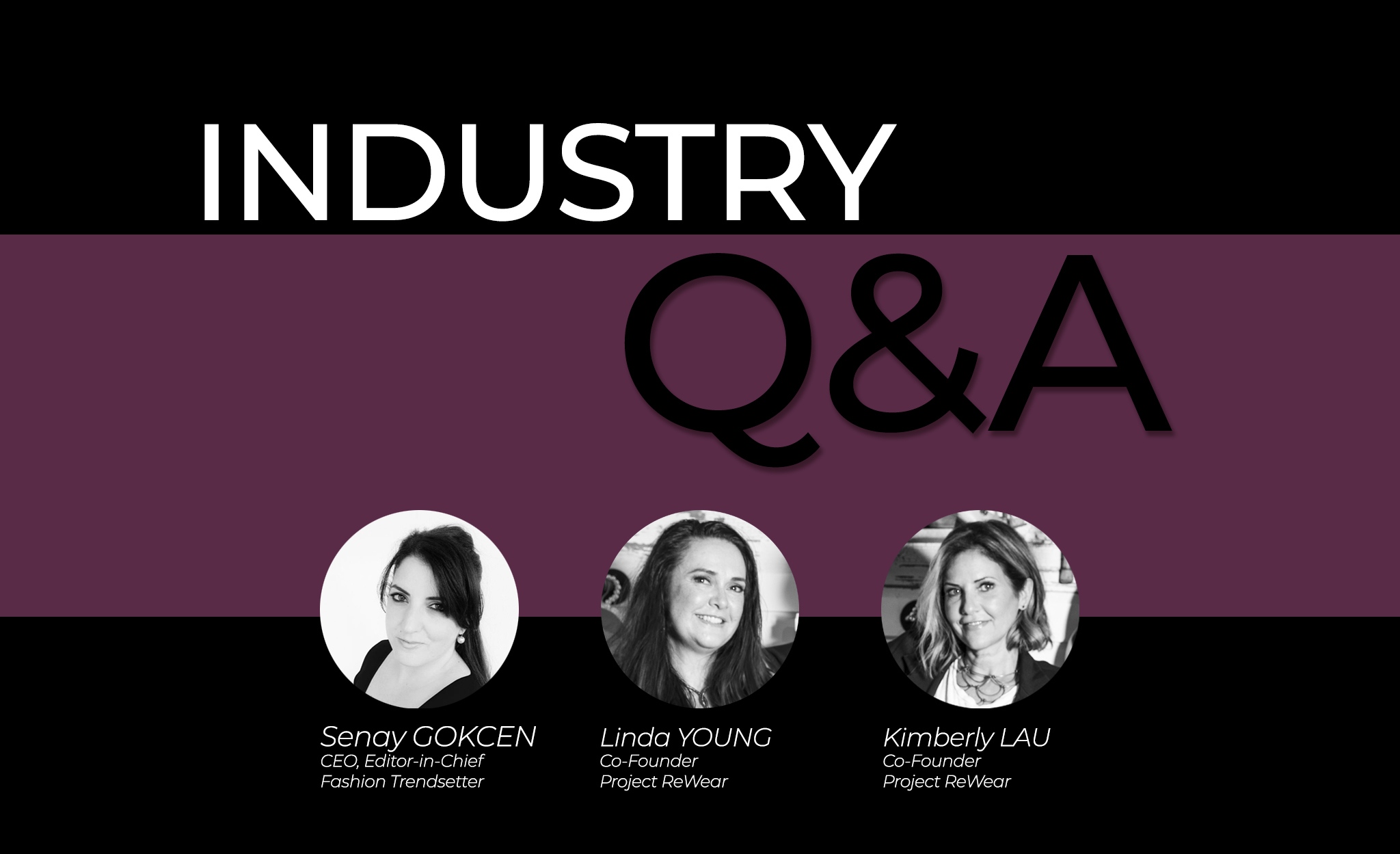
Senay Gokcen: Dear Kimberly and Linda, it’s a pleasure to welcome you-two inspiring and successful businesswomen, Co-Founders of Project ReWear-here at Fashion Trendsetter. To begin, can you each share a little about your personal backgrounds and what led you to create Project ReWear?
Kimberly Lay: I spent 24 years in wealth management and eventually became Co-CEO of my firm – but when I became a single mom raising two fast-growing boys, I started to see things differently. Our closets were overflowing with barely-worn clothes, and I couldn’t ignore how much waste we were generating without even trying. I’ve always believed in long-term thinking, and this felt like a very real, very urgent problem for future generations. Project ReWear started as my way of combining that mindset with something tangible – a solution that makes it easy for families to shop more consciously, affordably, and sustainably.
Linda Young: I’m originally from Australia, where secondhand shopping – or “op shopping” – is part of everyday life. I grew up spending weekends treasure-hunting with my mom, and I’ve carried that love of unique, preloved items with me ever since. Professionally, I spent years in retail management and global brand development. After moving to California, I shifted into nonprofit work and started volunteering at a local thrift store, eventually becoming its Board President. That role opened my eyes to the massive volume of clothing that goes unsold or ends up discarded. When I met Kim, it was clear we were both thinking about the same issue – and both ready to do something about it. Project ReWear became the solution we didn’t see elsewhere: stylish, impact-driven, and built by moms who’ve lived the problem.
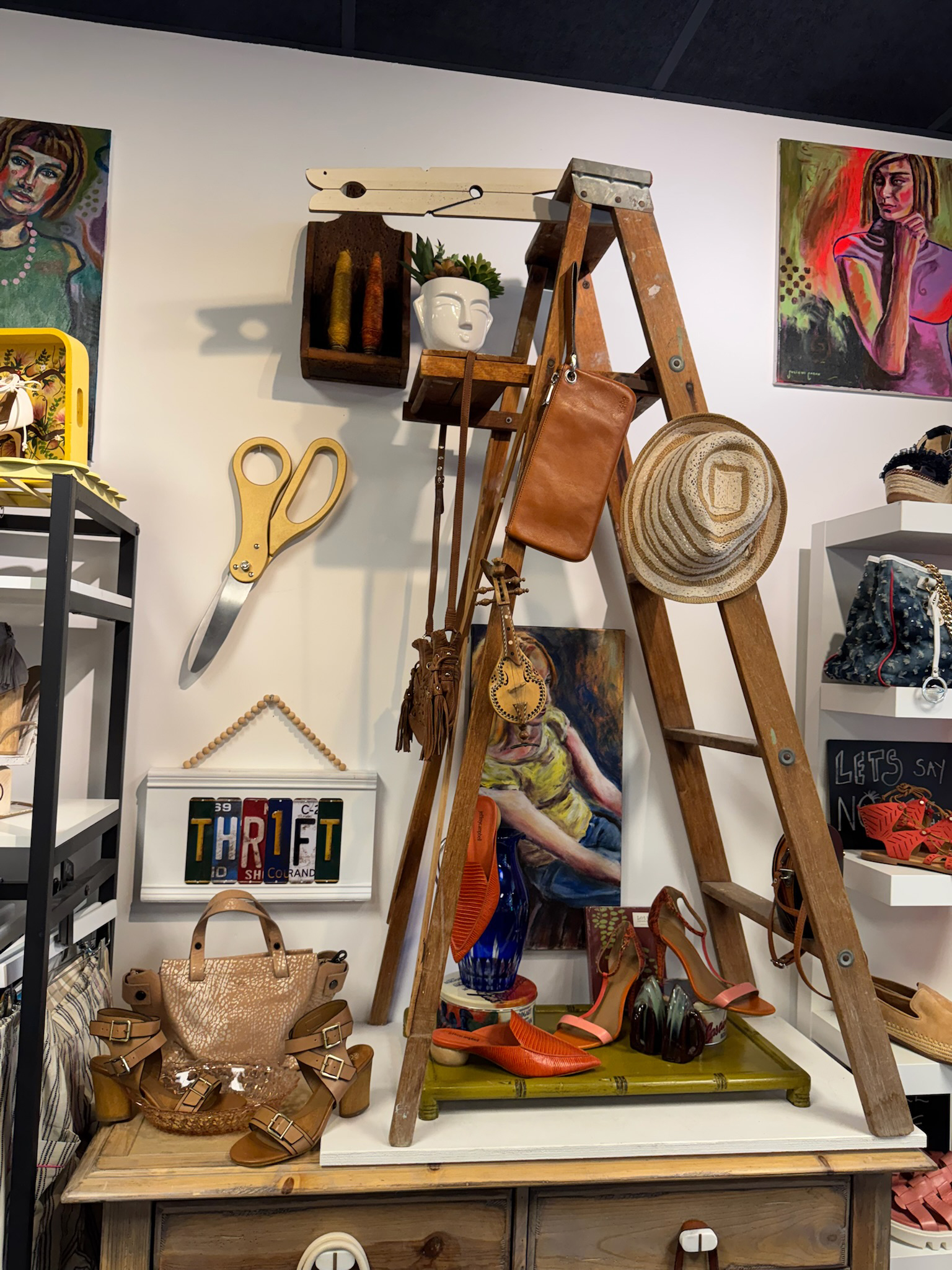
What was the moment or experience that sparked the idea for Project ReWear?
Kim: The idea had been on my mind for a while – especially as a mom constantly trying to keep up with two growing boys and their ever-changing closets. I was buying, donating, and replacing clothes at a pace that didn’t feel sustainable. Then one day, I walked into The Mad Attic, a local nonprofit thrift store, and met Linda. That conversation changed everything.
Linda: I happened to be working that day – I’d been volunteering at the thrift store for years and was serving as Board President. Kim and I immediately started talking about how much amazing, barely-worn clothing we saw being overlooked or discarded. As two moms, we knew this wasn’t just a family problem – it was a system problem.
Kim: That moment turned into hours of conversation about waste, overconsumption, and how families like ours didn’t really have an easy, stylish, sustainable option. We knew we could build something better – not just a store, but a model for change.
Linda: That’s when Project ReWear was born – a place where secondhand becomes the first choice, and families feel empowered to shop with purpose.
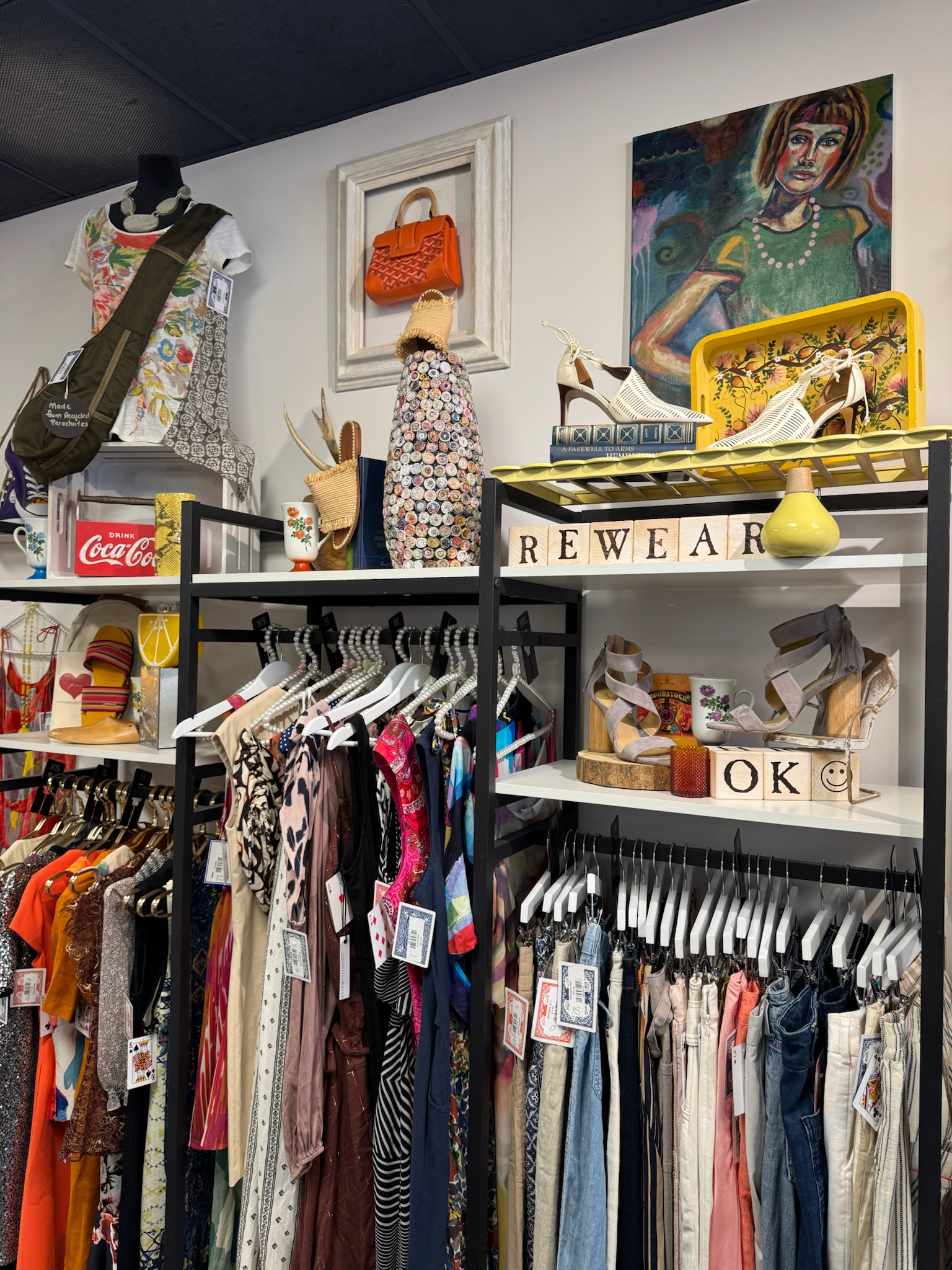
You both come from impressive but nontraditional fashion paths – retail management, brand development, and finance. How did your previous careers and life experiences influence the way you envisioned and built Project ReWear?
Linda: My background in retail and brand development shaped a lot of how we designed the in-store experience. I’ve worked with global brands and managed visual merchandising, so I knew the power of storytelling and presentation. I didn’t want Project ReWear to feel like a typical thrift store – I wanted it to feel like a curated boutique where every item had a story and every detail had purpose. Volunteering at a nonprofit thrift store taught me how powerful secondhand can be – but it also showed me the gaps. That blend of creativity and real-world resale experience helped me reimagine what secondhand shopping could look like.
Kim: Coming from finance, I approached the business from a strategy and sustainability standpoint – not just environmental, but financial too. I spent 24 years making long-term decisions for clients and companies, so when it came to Project ReWear, I knew we needed a model that was both mission-aligned and economically sound. I thought about how we could make resale more efficient, scalable, and measurable. As a mom, I brought the lived experience of needing affordable, quality clothes without the guilt of overconsumption. As a former CEO, I brought the systems thinking and operational lens to make it work.
Linda: We may not have traditional fashion résumés, but we built this from real life – as professionals, as moms, and as people who believed there had to be a better way.
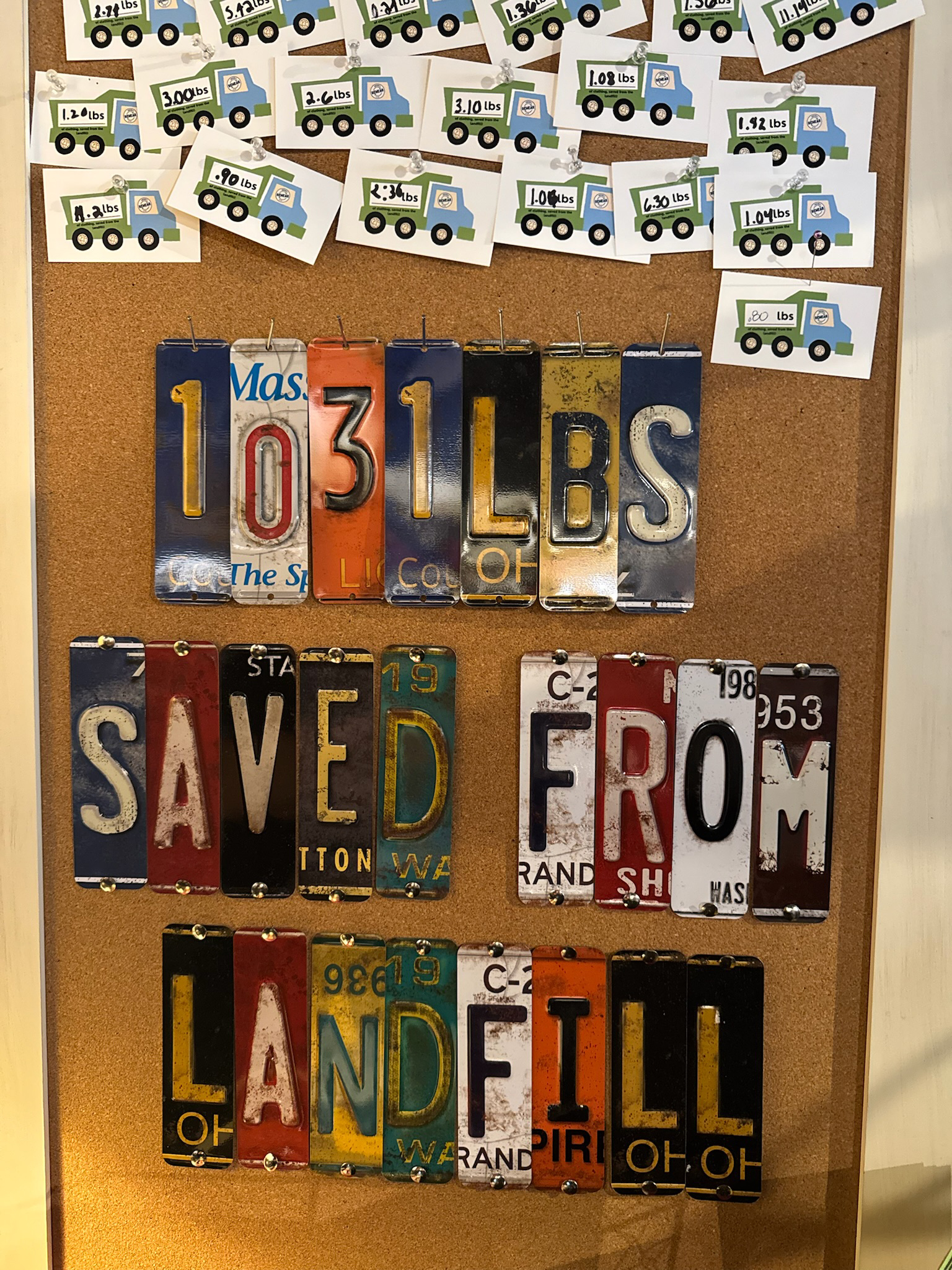
Project ReWear started with just two moms and one big idea. In those early days, what were some of the biggest obstacles you faced, and how did you overcome them?
Kim: One of the biggest challenges was changing the perception of secondhand. So many people still think “used” means lower quality – or less stylish. We knew we had to completely flip that narrative. From the start, we were intentional about curation, merchandising, and storytelling. We wanted people to walk in and think, “Wait… this is secondhand?”
Linda: And to be honest, we didn’t even expect that the community would want to donate their high-quality items to us – especially since we’re not a nonprofit, but a mission-driven social enterprise. But the support blew us away. People kept asking how they could contribute, and that generosity inspired us to create a model that worked. Now, we gratefully accept up to 10% of our monthly goal weight in donations – focusing on items that meet our quality and seasonal criteria.
Kim: We also had to figure everything out from scratch – sourcing inventory, building systems, and creating processes – all while balancing the realities of family life and starting something new.
Linda: What got us through was the belief that we were building something meaningful – and the community proved us right. They didn’t just shop with us; they showed up with open hearts, kind words, and genuine support. That’s what helped turn a big idea into something real.
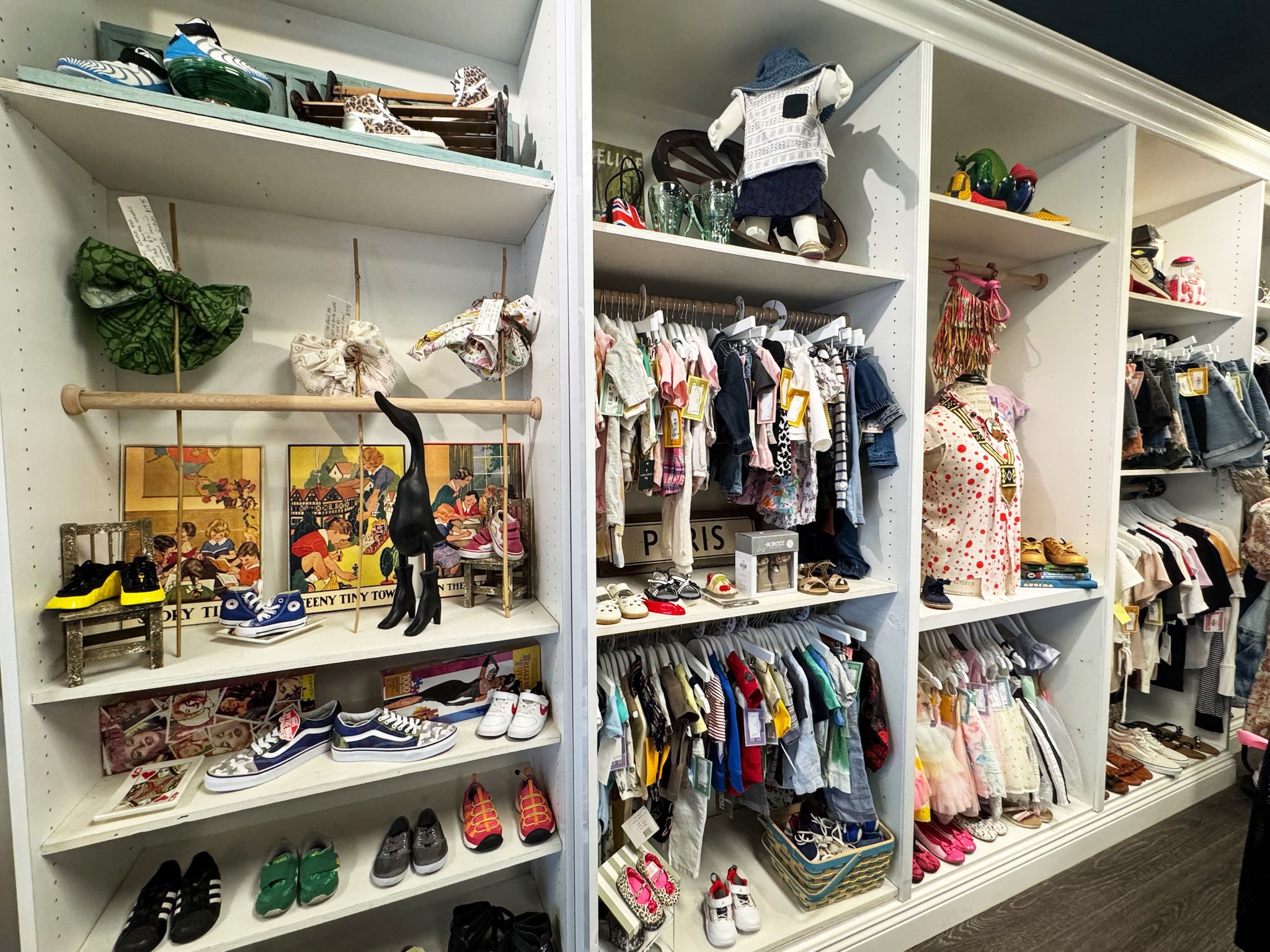
When you first launched Project ReWear, what was your vision – and how has that vision evolved as the company has grown?
Kim: In the beginning, our vision was simple: to make it easier for families – especially parents like us – to access stylish, affordable clothing without adding to the growing problem of fashion waste. We wanted to create a shopping experience that was as easy and inspiring as buying new, but without the environmental cost.
Linda: We also wanted to reframe how people think about secondhand. It wasn’t just about affordability – it was about making rewearing something people felt proud of. We focused on curating high-quality kids’ clothing and designing a space that felt intentional, beautiful, and joyful.
Kim: As the company has grown, so has our vision. Today, Project ReWear is more than just a resale boutique – it’s a movement. We now carry clothing for the whole family, plus jewelry, shoes, and fun knick-knacks – all preloved and purposefully chosen. We track the pounds of clothing diverted from landfills in real time, run sustainability education programs, and host community events like #LAStrong and What-A-Find Wednesdays.
Linda: What started as a mission to help parents shop better has evolved into something bigger – a platform for impact, education, and community connection. The heart of our vision is still the same: to make secondhand second nature. But now, we’re watching that idea ripple out in ways we never could have imagined.
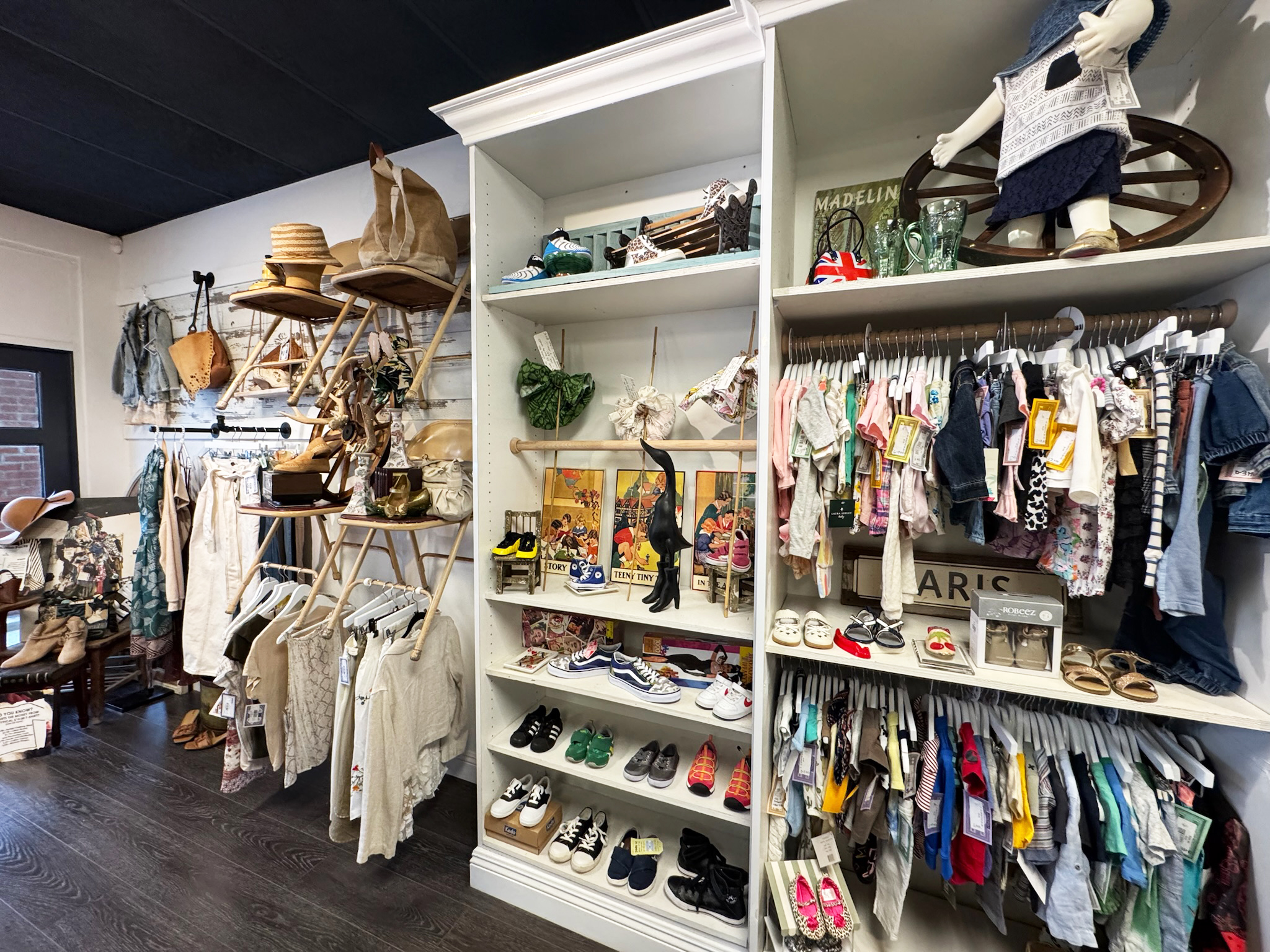
Project ReWear just celebrated a major milestone on last Earth Day by saving over 1,000 pounds of clothing from landfills! How exciting! Congratulations once again! So, how did it feel to see this vision come full circle?
Kim: Hitting that milestone – and now passing 1,200 pounds saved – has been incredibly rewarding. It started as this big, bold goal, and to see it actually happen just months into opening our doors felt like a full-circle moment. Every pound represents not just a piece of clothing saved, but water, energy, and emissions prevented. It’s a tangible reminder that what we’re doing matters – and that people are responding to it.
Linda: For us, it was never just about selling clothes – it was about creating a shift. Seeing the community rally around this mission, watching people come in and check the impact tracker, hearing customers proudly say, “I saved two pounds today” – it’s incredibly moving. When we passed 1,000 pounds on Earth Day, we looked at each other and thought; This is working. This is real change.
Kim: And the fact that we’re now over 1,200 pounds shows that the momentum is building. Our community is showing up, choosing better, and proving that small actions – when done collectively – can lead to big impact. That’s the ReWear Effect in action.
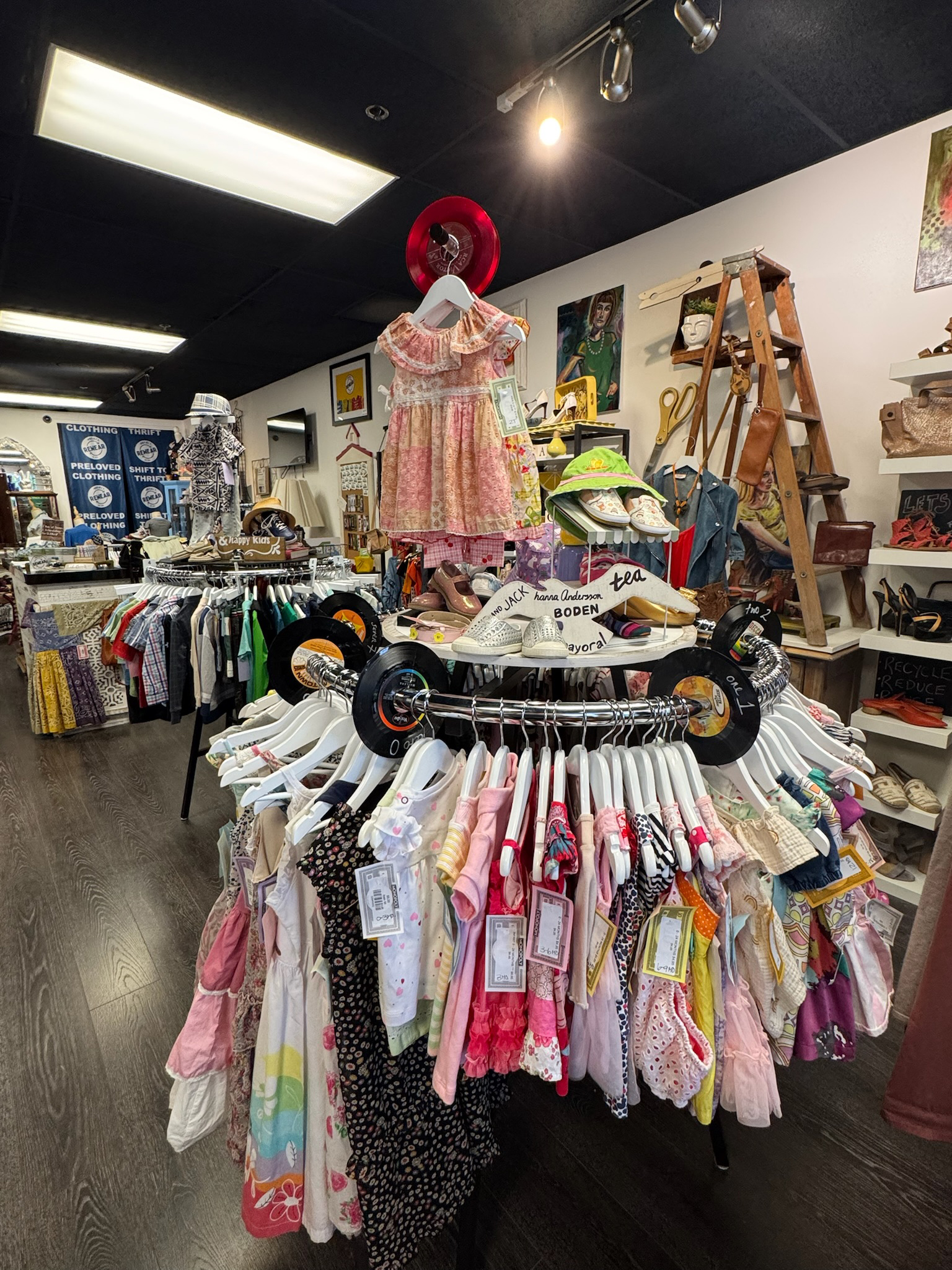
The Landfill Project gives customers a tangible way to track their impact. How did you come up with the idea of using the “garbage truck” display and real-time waste tracking?
Kim: The idea was sparked by a stat we came across that completely stopped us in our tracks – every second, a garbage truck’s worth of clothing is either landfilled or incinerated. Once we saw that, we couldn’t unsee it. It made the issue feel urgent, massive, and deeply personal – especially as moms raising the next generation.
Linda: We wanted to find a way to bring that abstract stat to life – something people could actually see and feel. So we flipped it: What if we could save just one of those trucks? That’s how The Landfill Project was born. We set a public goal to divert 8,000 pounds of clothing from landfills in 2025 – the approximate weight of one garbage truck.
Kim: To make it real for our customers, we weigh every item at checkout and update our in-store tracker regularly so shoppers can see our collective impact grow. Some customers even come back just to check the number and celebrate their contribution.
Linda: And the garbage truck display? That was our way of making the invisible visible. It turns a stat into a symbol – and shows every shopper that they’re not just buying clothes, they’re part of the solution.
Kim: And with the expansion to our online store coming this summer, we’re taking that transparency even further. Customers will be able to filter items by how many pounds they want to help save – and see in real-time how their purchase contributes to our collective impact. It’s all about making sustainability visible, accessible, and actionable – whether you’re shopping in-store or online.
Project ReWear’s 2025 goal is bold: 8,000 pounds saved. What strategies are you putting in place to achieve – or even surpass – that goal?
Kim: We like bold goals — especially ones rooted in impact. Saving 8,000 pounds of clothing from landfills isn’t just symbolic; it’s a clear, measurable way to hold ourselves accountable to the mission. To get there, we’re focused on expanding access, deepening education, and empowering our community to be part of the solution.
Linda: First, we’re launching our online store this summer, which means more people can shop consciously from anywhere — and see exactly how many pounds they’re helping to save with each purchase. The site will let customers filter by impact, so they can literally shop by the pound.
Kim: We’re also continuing to grow our in-store programs — like What-A-Find Wednesdays and The Community Rack — which keep people engaged and coming back regularly. And we hope to partner with more local schools, parent groups, youth programs, and influencers who are focused on sustainability to help us amplify the message and grow the movement.
Linda: On the sourcing side, we’re increasing the volume of last-stop thrift inventory we rescue, and now accepting a limited percentage of high-quality community donations to help us hit our monthly goals. Every piece counts — and we track it all.
Kim: But the real strategy is people. This only works because our community believes in it. So we’re making it easy, fun, and rewarding to take part. Whether someone saves one pound or one hundred, they’re helping us build something bigger than any one closet.
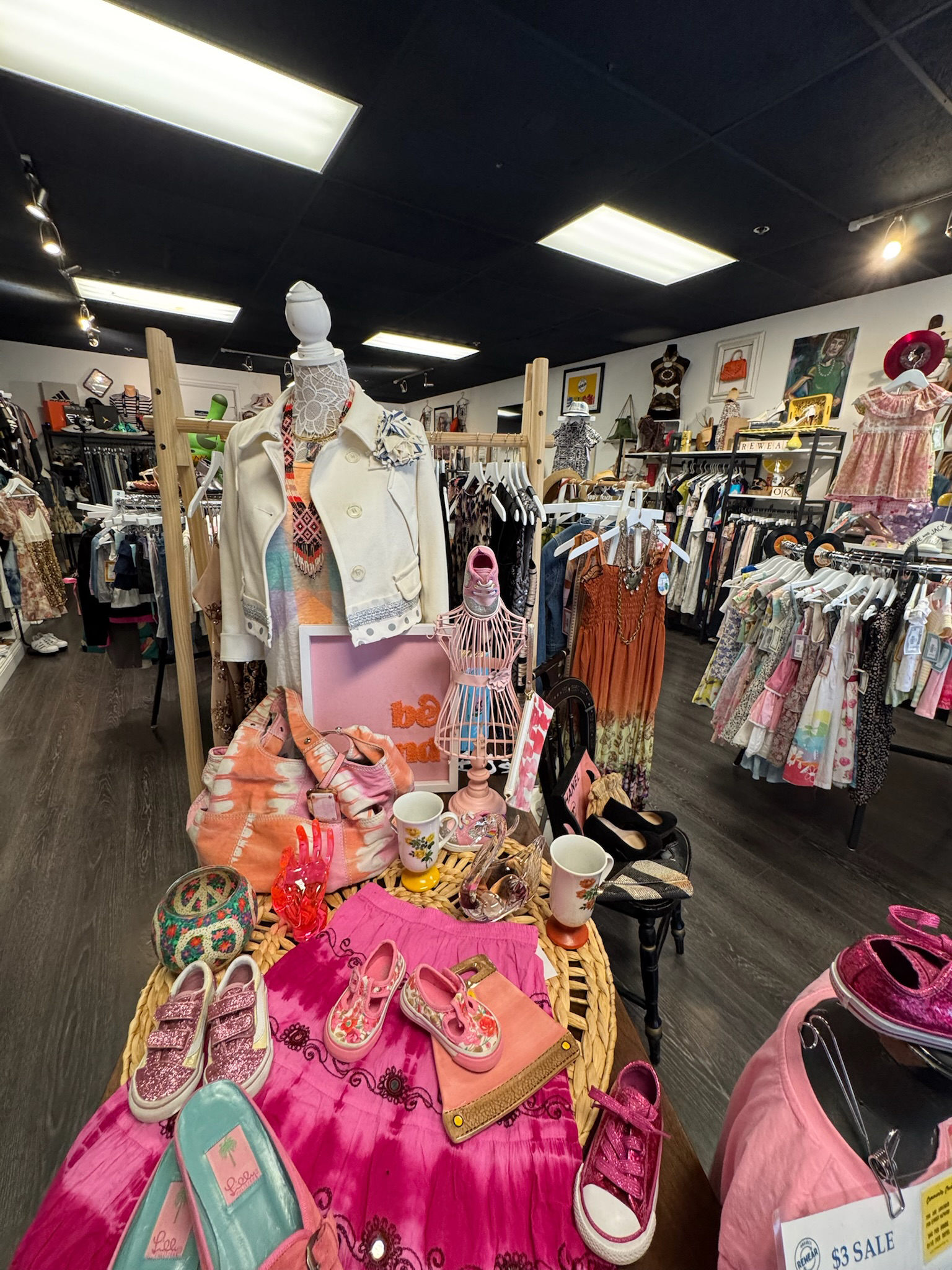
Photo courtesy of Project ReWear.
The devastation caused by last year’s LA wildfires was deeply felt by all of us, and witnessing the loss across so many communities was heartbreaking. Can you tell us more about the #LAStrong Collection and what it means to you personally to be able to support wildfire victims through fashion?
Kim: The #LAStrong Collection was born out of heartbreak – and hope. When the wildfires swept through Southern California, we felt the devastation deeply. As a local business rooted in community and sustainability, we knew we had to do something. So we started thinking about how we could turn preloved fashion into a source of strength, support, and storytelling.
Linda: We sourced high-quality secondhand t-shirts and created a limited-edition design featuring a vintage blue VW van – inspired by a real one that miraculously survived the Palisades Fire. The word “Magic” appears on the license plate, because that’s what it felt like – a small miracle amid the chaos. It became a symbol of resilience.
Kim: Every shirt in the collection is unique, and 100% of the profits go to three incredible organizations supporting wildfire victims, displaced animals, and the first responders who risk everything to protect our communities. To be able to use fashion – especially secondhand fashion – as a vehicle for healing and impact has been one of the most meaningful things we’ve done.
Linda: It reminded us that fashion can do more than make a statement – it can make a difference. And this collection wasn’t just for LA – it was from LA. A love letter to our community. A way to say: We’re with you. We see you. And we’re showing up the best way we know how.
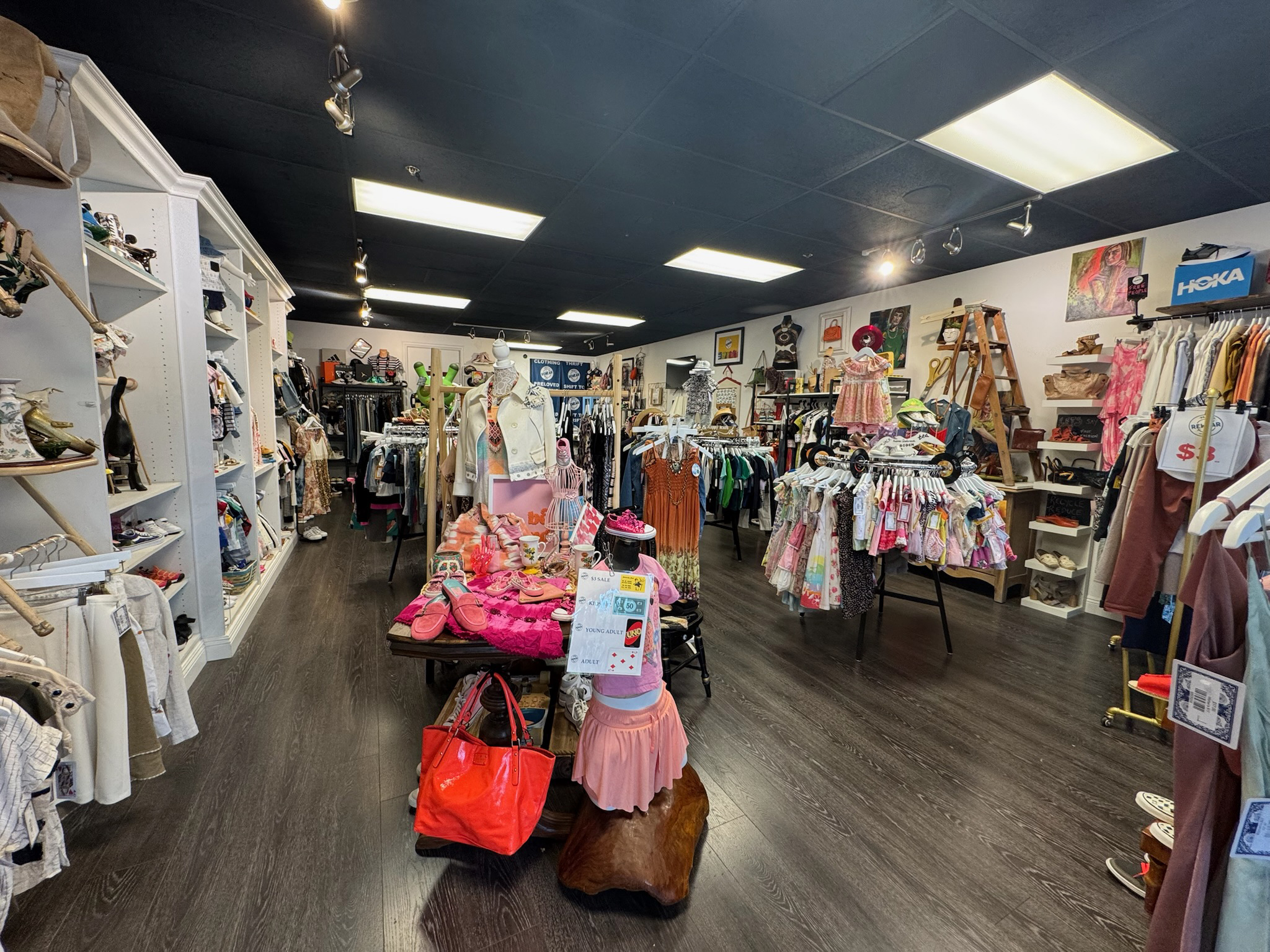
Sustainability education is a big part of your mission. What have been some of the most memorable reactions from students or community members during your talks and outreach events?
Linda: One of the moments that really stuck with us was during a school visit, when we told students it takes about 1,800 gallons of water to make just one pair of jeans. A student raised their hand and asked, “Wait – is that a lot of water?” When we explained that it’s the equivalent of a little over 9 years’ worth of drinking water for one person, their jaws dropped. You could literally see the shift in understanding happen in real time.
Kim: Another powerful moment came when a student said, “I didn’t know my clothes could hurt the planet.” It was honest, thoughtful, and exactly why we do this. Our goal isn’t to shame – it’s to inform, inspire, and empower people to take small, meaningful steps.
Linda: We’ve also had parents and teachers come up to us afterward and say things like, “I never realized donations don’t always mean less waste,” or “This changed the way I think about shopping for my family.” That kind of feedback reminds us that education is the spark – it starts the ripple.
Kim: Whether we’re talking to kids or adults, it’s always about making the impact feel personal. When someone walks away thinking, “I can do something about this,” – that’s when we know the message landed. That’s the ReWear Effect in action.
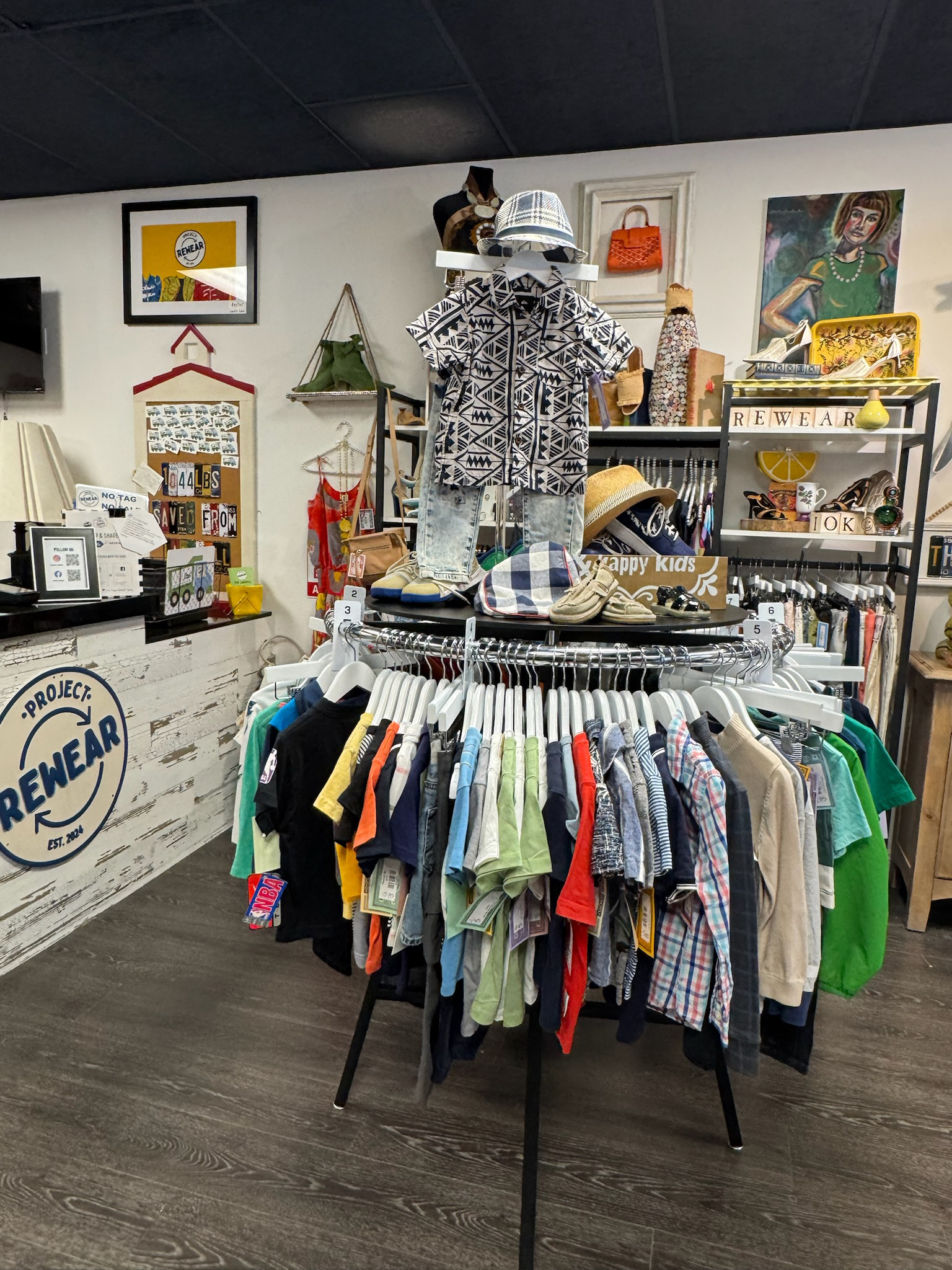
With a growing team behind Project ReWear, how do you foster a sense of community and shared purpose among everyone involved?
Kim: From day one, we’ve been clear that Project ReWear isn’t just a store – it’s a mission. Everyone who joins our team, whether they’re part-time, a volunteer, or helping behind the scenes, knows they’re contributing to something bigger than retail. We make sure everyone understands the “why” behind what we do.
Linda: We also lead with transparency. Our team sees our progress in real time – how many pounds we’ve saved, what campaigns we’re working on, what goals we’re chasing next. We celebrate wins together, and we’re not afraid to show the messy middle, too. That shared visibility keeps us aligned and motivated.
Kim: At the end of the day, everyone on our team – just like our customers – wants to be part of something meaningful. And when people feel seen, valued, and inspired, the sense of community comes naturally. That’s what keeps the ReWear Effect growing.
Looking ahead, what’s your bigger dream for Project ReWear beyond Thousand Oaks – and what advice would you give to other moms (or dads!) who want to start their own community-driven sustainability projects?
Kim: Our bigger dream is to see Project ReWear replicated in cities across the country – not as a franchise, but as a community-powered model that can be adapted locally. We’re currently turning our first brick-and-mortar store into an online blueprint – a system that shows how to source, curate, and track impact using last-stop thrift inventory. Our hope is to make this model replicable in larger cities with access to abundant thrift resources, so more communities can rewear what already exists – and make it their own.
Linda: We’ve seen how powerful this can be when it’s done with intention and heart. From parents and students to local organizations and sustainability-minded shoppers, people want to be part of something that matters. Our goal is to give others the tools and framework to launch something similar in their own neighborhoods.
Kim: For anyone out there dreaming of starting their own sustainability project – whether it’s resale-focused or otherwise – our advice is: start small and stay rooted in your “why.” You don’t need a massive budget or a perfect plan. What you need is a clear mission, consistency, and a community that believes in what you’re building.
Linda: And don’t wait for permission. If you see a problem and you care enough to act, that’s enough to begin. Surround yourself with others who share your values, ask for help when you need it, and take one step at a time. That’s how ReWear started – and that’s how real change begins.
A heartfelt thank you to Kimberly Lau and Linda Young, Co-Founders of Project ReWear, for taking the time to share their invaluable insights with us. Their passion for sustainable fashion, commitment to community, and forward-thinking approach are a true inspiration. We are grateful for their contributions to this conversation. Stay tuned for more exclusive interviews with the trailblazers redefining the future of fashion, interior design, and textiles.
— Senay GOKCEN | CEO, Editor-in-Chief, Fashion Trendsetter
Project ReWear
https://www.projectrewear.com
Instagram | Facebook | LinkedIn
STORE LOCATION:
2940 E. Thousand Oaks Blvd., Unit C
Thousand Oaks, CA 91362
STORE HOURS:
Closed Sundays and Mondays
Tuesday: 10 am – 5 pm
Wednesday: 10 am – 5 pm
Thursday: 10 am – 5 pm
Friday: 10 am – 5 pm
Saturday: 10 am – 4 pm
© 2025, Fashion Trendsetter. All rights reserved. No part of this Q&A article may be reproduced without our written permission. You are welcome to share this article, provided that proper credit is given to Fashion Trendsetter, including a link to the original source. Please use the following citation:
GOKCEN, Senay. Fashion Trendsetter. “Industry Q&A: Kimberly Lau and Linda Young, Co-Founders of Project ReWear,” May 2025, [https://www.fashiontrendsetter.com/v2/2025/05/29/industry-qa-kimberly-lau-and-linda-young-co-founders-of-project-rewear/]. Accessed Day/Month/Year.
If you’d like to participate in our Q&A section, please email us at [email protected] with ‘Industry Q&A Request’ in the subject line.
All images courtesy of Project ReWear.
Tags: apparel, boutique, California, clothes, clothing, clothing industry, clothing waste, Community, donation, Emily Perez, fabric waste, fashion, fashion industry, industry, interview, Kimberly Lau, Landfill Project, Linda Young, op shopping, preloved fashion, Project ReWear, QandA, retail, secondhand shopping, Senay GOKCEN, shop local, store, support, sustainability, Sustainable, textile waste, Thousand Oaks, thrift store, Top

